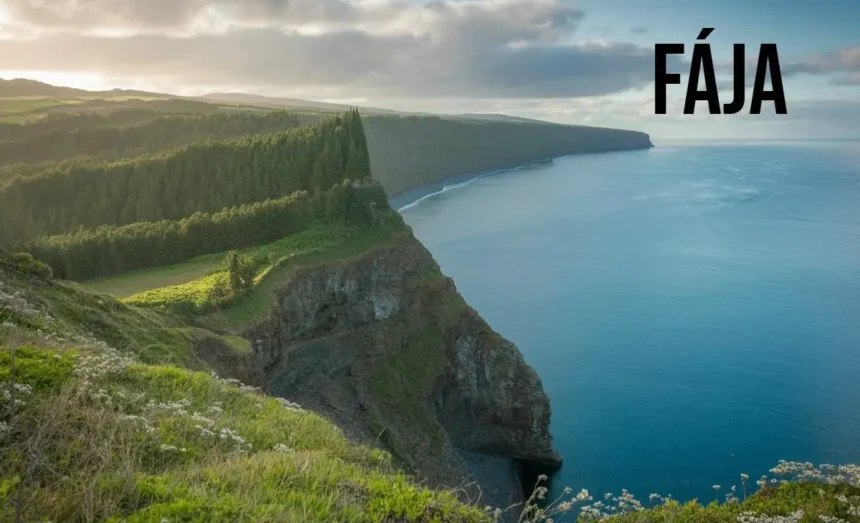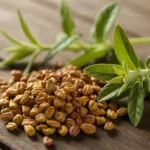The word fája describes a unique and fascinating coastal landform that has shaped the landscapes and communities of the Atlantic islands for centuries. Found primarily in the Azores and Madeira, a fája is a flat area of land at the base of steep cliffs, often created by landslides, lava flows, or gradual erosion. These natural terraces are not only visually striking but also rich in cultural and ecological significance.
For generations, locals have relied on fájas as fertile farming grounds, safe havens for settlement, and quiet escapes from the challenges of island life. Today, they remain important for agriculture, tourism, and environmental conservation. In this article, we’ll take a closer look at what a fája is, how it forms, its role in daily life, and why it continues to capture the imagination of geologists, travelers, and residents alike.
The Origins and Formation of a Fája
A fája is not a random piece of land; it is the result of powerful natural processes. Typically, these flat coastal plains form when large amounts of rock and soil break away from cliffs, or when lava from volcanic eruptions flows down toward the sea and solidifies at the base. Over time, waves, weather, and vegetation stabilize the area, turning it into usable land.
In the Azores, for example, centuries of volcanic activity created numerous fájas, each with its own microclimate. Some are sunny and dry, perfect for vineyards and fig trees, while others remain humid, supporting dense vegetation. This diversity makes fájas unique ecological zones, distinct from the surrounding cliffs and uplands.
The Cultural Significance of Fájas
For island communities, fájas have always been more than geological formations. They are lifelines. Settlers recognized their agricultural potential early on, cultivating crops such as yams, beans, grapes, and bananas. The fertile soils, combined with the sheltered location, made fájas essential for food security.
Many families also built small homes and fishing huts in these areas. Although isolated and sometimes difficult to reach, fájas provided stability in regions where steep volcanic slopes made life challenging. Even today, in places like São Jorge Island in the Azores, locals speak fondly of weekends and summers spent tending to gardens in fájas passed down through generations.
Advantages of Living Near a Fája
While not everyone chooses to live near these coastal terraces permanently, the benefits they offer are undeniable:
- Fertile land: The soil in a fája is often volcanic and mineral-rich, producing high-quality crops.
- Milder climate: Their lower altitude and sheltered environment create microclimates favorable for specific plants.
- Proximity to the sea: Fájas are often used as fishing outposts, blending agriculture and marine resources.
- Cultural heritage: Families maintain ties to the land, preserving traditions like winemaking and local festivals.
- Tourism potential: Their beauty and uniqueness attract hikers, photographers, and eco-tourists.
Fájas in Modern Times
In today’s world, fájas are no longer essential survival zones, but they remain deeply relevant. Many locals still farm them, producing organic goods for local and international markets. Tourism has also become a major factor, as travelers seek authentic experiences that connect them to both nature and history.
For example, Fajã da Caldeira de Santo Cristo in São Jorge has become a hotspot for surfing and bodyboarding. Its lagoon is home to clams, a local delicacy, making it an attraction for both food lovers and adventurers. Similarly, Fajã dos Cubres is a UNESCO-recognized biosphere reserve, celebrated for its biodiversity.
Case Study
A real-world example of how a fája continues to influence life is found at Fajã da Caldeira de Santo Cristo in the Azores. This secluded area is accessible only by foot or quad bike, emphasizing its isolation. Yet despite the challenging access, it has become one of the most visited fájas due to its lagoon, surfing waves, and ecological importance.
Local families still maintain summer houses here, blending modern tourism with traditional lifestyles. Visitors are drawn not only by the natural scenery but also by the sense of community and resilience that defines life on a fája. This case shows how these unique landforms balance preservation, tradition, and modern use.
Challenges of Preserving Fájas
Despite their charm, it face multiple challenges. Climate change, rising sea levels, and stronger storms threaten their stability. Landslides remain a constant risk, as do the pressures of over-tourism. Balancing economic use with conservation is an ongoing struggle.
Authorities and local communities have begun implementing protective measures, such as eco-tourism guidelines, reforestation projects, and restrictions on construction. These steps aim to ensure that fájas remain a living part of island culture for future generations.
Tips for Visitors Exploring a Fája
If you ever get the chance to visit a fája, here are some useful tips:
- Prepare for hiking: Many fájas are only accessible on foot, so wear proper shoes.
- Respect the environment: Stick to trails and avoid damaging local vegetation.
- Engage with locals: Many families still tend crops here, and their stories enrich the experience.
- Try local food: Products like clams, figs, and wine are specialties of different fájas.
- Stay mindful of weather: Conditions can change quickly on islands, so plan accordingly.
Fájas as Symbols of Resilience
Ultimately, It is more than land. It symbolizes resilience—the ability of nature to rebuild after destruction, and of humans to adapt to difficult environments. From their volcanic origins to their role in modern tourism and agriculture, fájas showcase the deep connection between people and the natural world.
Conclusion
The story of the fája is a story of survival, adaptation, and beauty. These unique landforms continue to shape the culture, economy, and identity of island communities. They are at once fragile and enduring, demanding respect and offering abundance.
As tourism grows and climate challenges increase, it is crucial to protect and celebrate fájas for what they are: living reminders of how nature and humanity can thrive together. If you ever find yourself on the islands of the Azores or Madeira, make time to visit a fája—you won’t just see a landscape, you’ll step into a legacy.
FAQs
What is a fája?
It is a flat piece of land at the base of steep cliffs, often created by landslides or lava flows.
Where are fájas found?
They are most common in the Azores and Madeira islands in the Atlantic Ocean.
Why are fájas important for farming?
Their volcanic soil is rich and fertile, making them ideal for growing crops like yams, figs, and grapes.
Can tourists visit fájas?
Yes, many are open to visitors, often accessible by hiking trails and known for their scenic beauty.
What challenges do fájas face today?
They are vulnerable to climate change, rising sea levels, and pressures from over-tourism.







